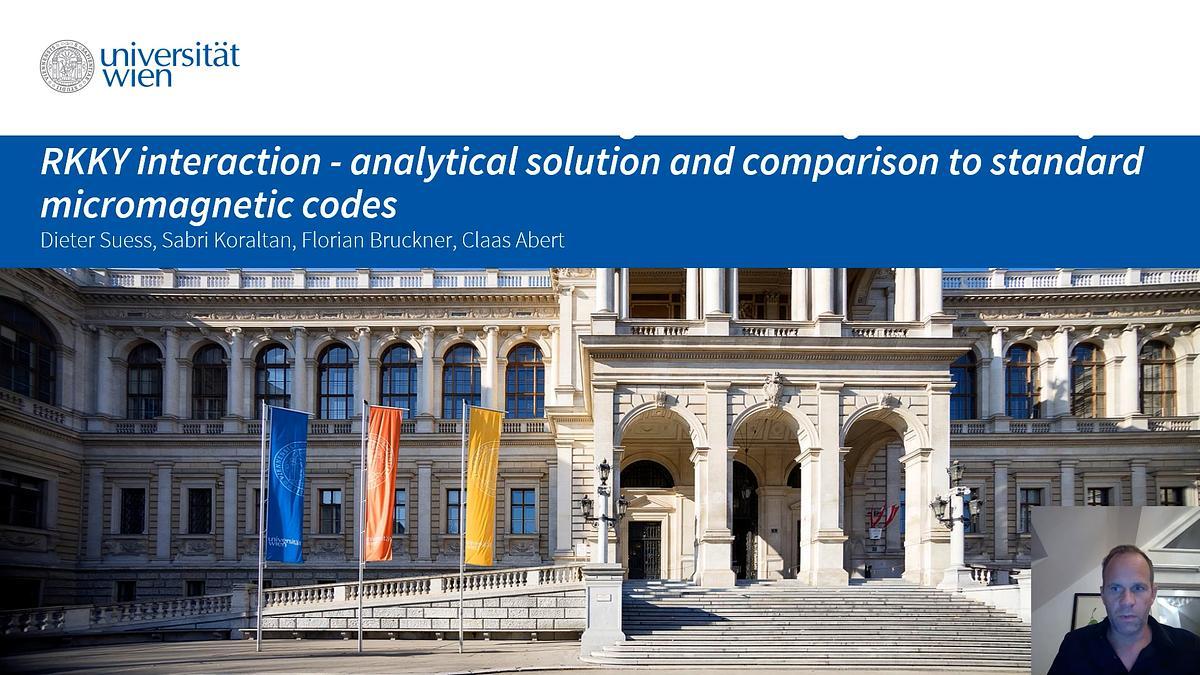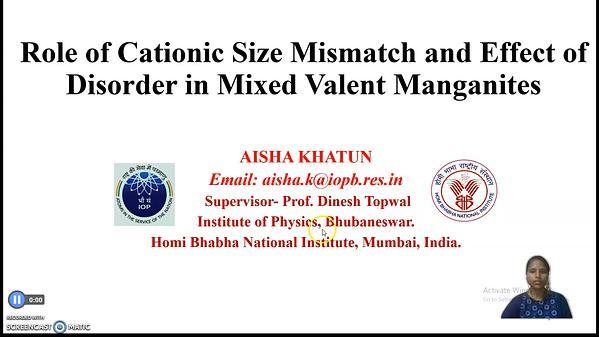
Premium content
Access to this content requires a subscription. You must be a premium user to view this content.

technical paper
Accurate finite difference micromagnetics of magnets including RKKY interaction
Within this talk we show the importance of accurate implementations of the RKKY interactions for antiferromagnetically coupled ferromagnetic layers with thicknesses exceeding the exchange length. In order to evaluate the performance of different implementations of RKKY interaction, we develop a benchmark problem by deriving the analytical formula for the saturation field of two infinitely thick magnetic layers that are antiparallelly coupled (Fig. 1). Without external field, the magnetization in the layers is parallel to the easy axis (y-direction) in the +y and -y direction. When a field in the x-direction is applied, a partial domain wall is formed (Fig. 1). We find that there exists a critical field that fully saturates the structure in the x-direction which is given by, Hx,crit = 2 K1/Js 1+Jrkky2/(AK1), where Jrkky is the RKKY coupling strength, K1 the anisotropy constant and A exchange constant 1. This benchmark problem shows that state-of-the-art implementations in commonly used finite-difference codes lead to errors of the saturation field that amount to more than 20% for mesh sizes of 2 nm which is well below the exchange length of the material. In order to improve the accuracy, we develop higher order cell based (see Fig. 2 - paper, cell O1 and O2) and nodal based finite-difference codes (see Fig. 2 - paper, node) that significantly reduce the error compared to state-of-the-art implementations (see Fig. 2 - mumax) 2. For the second order cell based and first order nodal based finite element approach, the error of the saturation field is reduced by about a factor of 10 (2% error) for the same mesh size of 2 nm.
References
1 D. Suess, S. Koraltan, F. Slanovc, F. Bruckner, C. Abert, "Accurate finite-difference micromagnetics of magnets including RKKY interaction -- analytical solution and
comparison to standard micromagnetic codes", https://arxiv.org/abs/2206.11063

Fig. 1: Analytic benchmark problem of two infinitely extended layers, that are antiferromagentically coupled via Jrkky.

Fig. 2: Convergence towards the analytic solution of Hx =5 x 2 K1/Js for different micromagnetic codes as function of discretization length dz. It is shown that standard finite difference codes (e.g. mumax) that uses zero order methods for the RKKY interaction show significant errors. The developed method (paper,cell O2) shows significantly better convergence.

